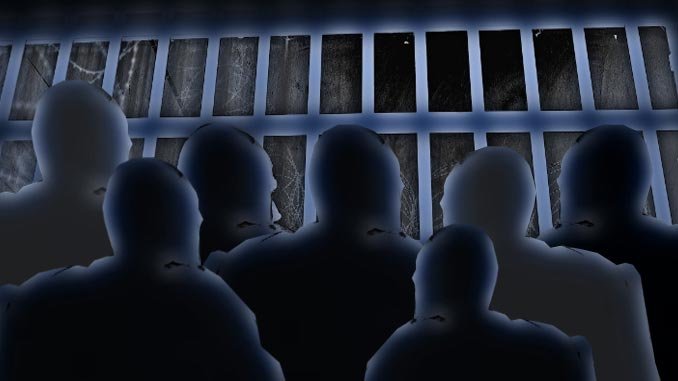It is getting to be a real crime.
All is not well in Canada’s prison system and Public Safety minister Ralph Goodale, charged with making it better, is working against the clock.

In fact, a fuse is hissing and smoking away in both our federal and provincial jails, unnoticed for the most part by Canadians. It is getting harder and harder to ignore.
Just last week, there was a “flat-out riot” according to guards who work at Saskatchewan Penitentiary in Prince Albert. Forty-three year old Jason Bird died, and at least eight others were sent to hospital after a major disturbance that left parts of the federal prison “uninhabitable”.
According to witnesses, all of the lights, windows and cameras at the prison were smashed out, and heating units were pulled from the walls. The mayhem that saw multiple inmates stabbed is thought to have been triggered by complaints about food portions at the lunch serving on December 14.
Over the last decade, the former Harper government brought many changes to the federal prison system, including the same menu for all prisoners regardless of age and activity level, and policies like double-bunking. Inmate-on-inmate assault has risen by an astonishing 93 per cent in federal prisons according to the federal correctional investigator’s office. Executive Director and General Counsel, Dr Ivan Zinger rightly notes that getting assaulted shouldn’t be part of an inmate’s sentence.
An even bigger problem than inmate violence in our prisons is how the correctional system handles the high number of inmates with serious mental health issues. How bad is that issue? Huge. This week an Ontario judge certified a $600-million class action lawsuit against the federal government on behalf of thousands of inmates who say they did not receive proper treatment of their mental illnesses. Correctional Service Canada, for its part, says that it has invested $77 million to deal with this difficult issue in a timely way.
Beyond these huge systemic problems, there are the Kafka-esque stories of unimaginably cruel blunders in the prison system.
Aboriginal inmate Adam Capay was kept in a provincial solitary confinement cell for four years awaiting trial on a murder charge involving another inmate at Thunder Bay Correctional Centre in 2012. Capay was held in an acrylic-glass cell with no windows and 24/7 artificial light. Although he was frequently in trouble with the law, especially when drinking, he had been originally jailed at 19 on relatively minor charges: carrying a weapon — a baseball bat — and smashing his mother’s car.
It was prison guards worried about Capay’s plight who actually alerted Ontario’s Chief Human Rights Commissioner about this monstrous abuse. Renu Mandhane took up the inmate’s cause after meeting him. Capay was eventually moved to more humane quarters by the province’s Correctional Services Minister David Orazietti. Somehow, a man had been left in solitary confinement for over 1,500 days.
How bad have things become in Ontario? That same minister, Orazietti, abruptly resigned from cabinet last week, after being battered in the legislature over the dire state of Ontario’s jails. In fact, Ontario just hired long-time federal Correctional Investigator Howard Sapers to become the province’s independent advisor on corrections, a post he will take up in January. A key part of his mission is to reform the use of segregation, by reducing the number of people held in segregation and coming up with alternatives to it.
There are, of course, the sensational stories about inmates who die while behind bars, in part because the system has failed them – the Ashley Smiths of the penal world. The Coroner called her death while in federal custody in 2007 a “homicide”, and came up with 103 recommendations designed to protect inmates, particularly the ones in segregation.
The coroner’s suggestions touched off a passionate debate about the use of so-called “solitary confinement” in Canada, with prominent jurists like former Supreme Court Judge Louise Arbour declaring it should be banned. On the other side of the argument, many CSC employees argue that segregation is needed as a tool to keep order in the prisons. While that debate continues to rage, the tragedy of Ashley Smith has been repeated.
A pair of Newfoundland families have launched lawsuits against the Correctional Service of Canada after the 2015 deaths of two female inmates at Nova Institution for Women in Truro, Nova Scotia. Ottawa lawyer Frances Shapiro Munn will be seeking damages on behalf of Veronica Park and Camille Strickland-Murphy.
The women died in the federal jail just months apart from each other – one by suicide and the other from pneumonia.
Kim Pate, now a Senator, was then the Executive Director of the Canadian Association of Elizabeth Fry Societies. She made clear in an interview at the time that the snail’s pace of reform after the Ashley Smith case contributed to the deaths. “If those recommendations had been followed up on, I think it’s conceivable the deaths could have been prevented.”
Michael Harris
iPolitics.ca
Dec 18, 2016
Hi! I am a robot. I just upvoted you! I found similar content that readers might be interested in:
https://ipolitics.ca/2016/12/18/reform-gone-wrong/